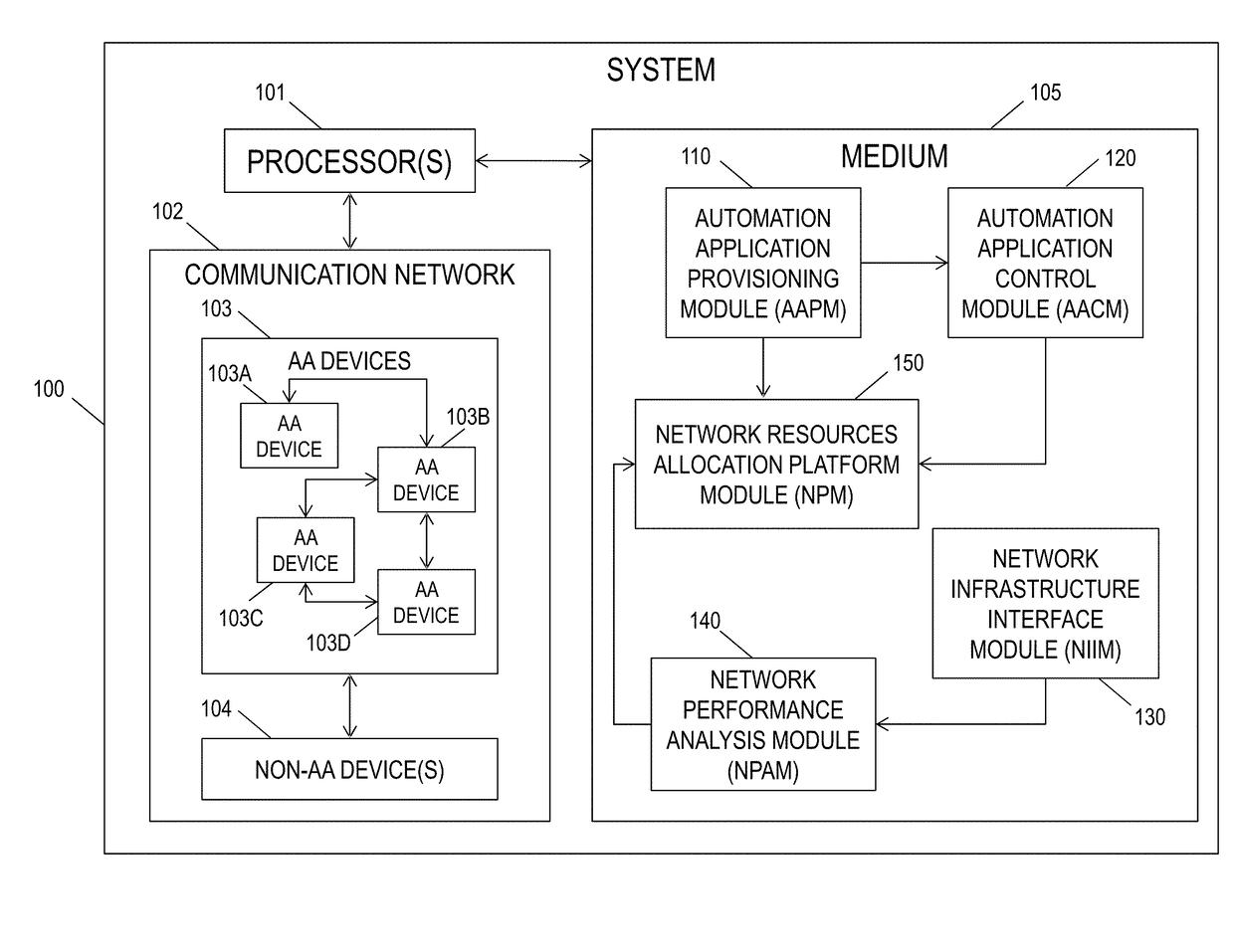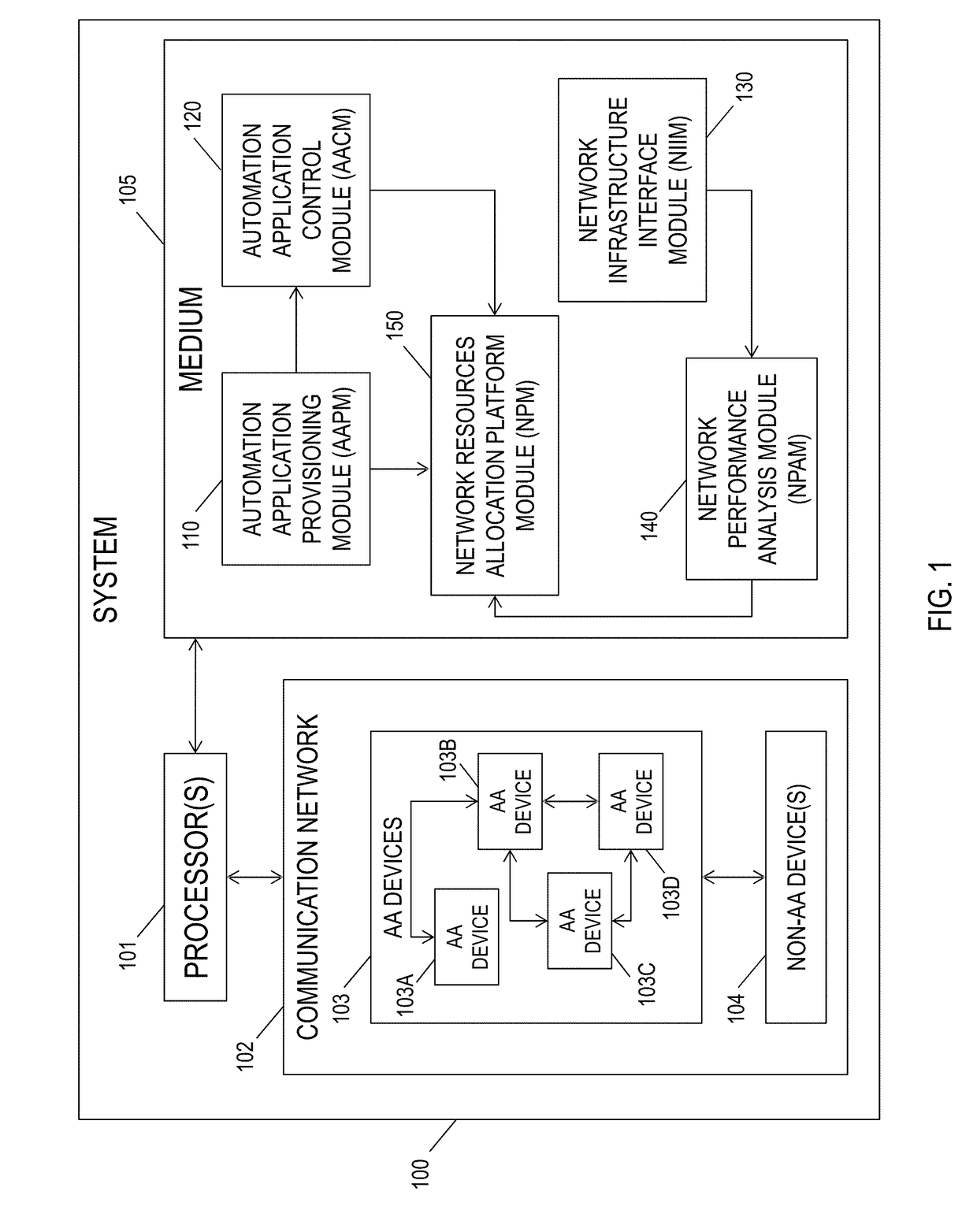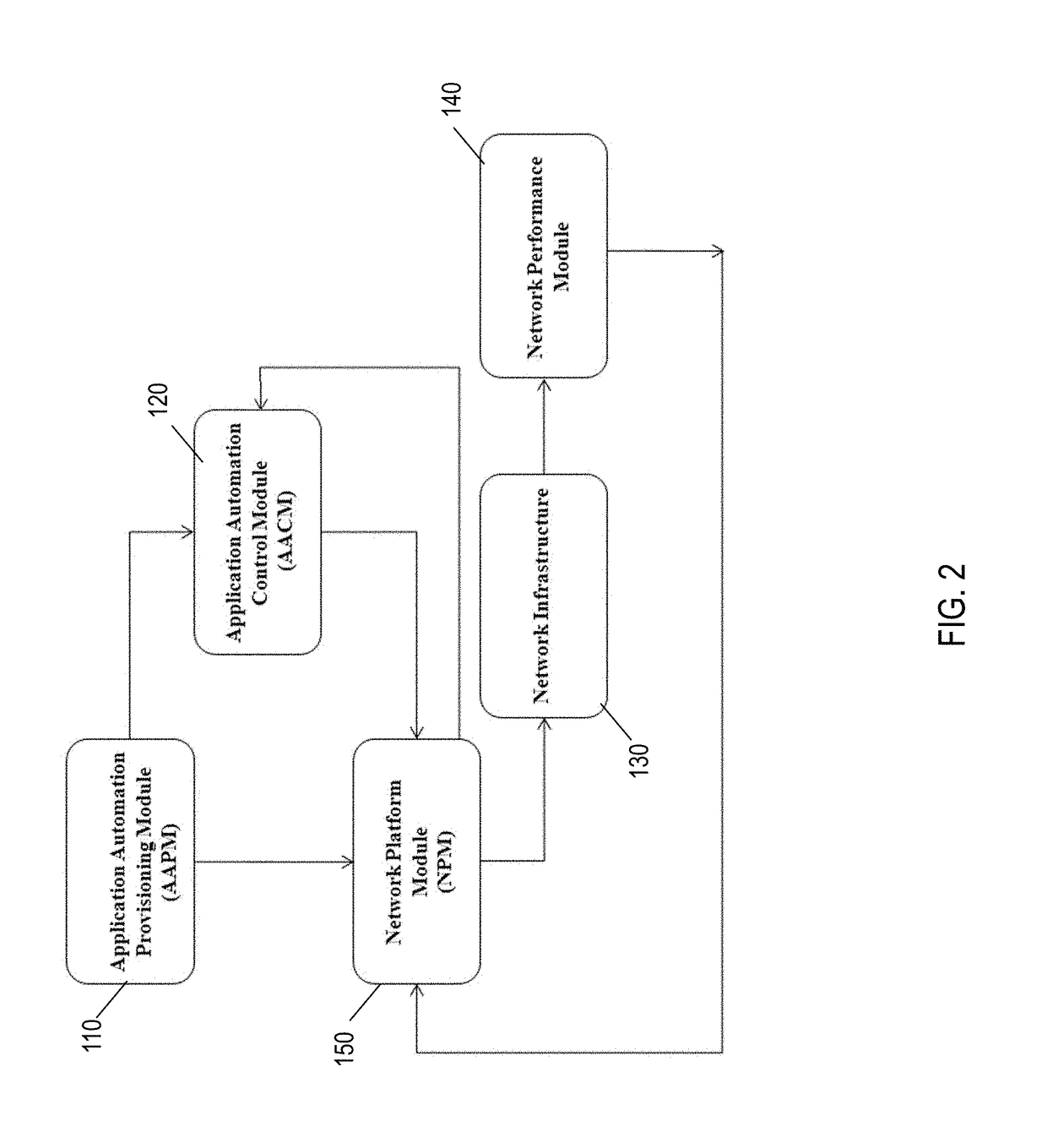Systems, methods, and computer medium to provide adaptive priority scheduling of communications over a network and dynamic resources allocation among devices within the network
a network and priority scheduling technology, applied in the field of network management, can solve the problems of high-speed bandwidth and fast switching infrastructure, industry has failed to integrate multiple aas on the same network, and the prior art has failed, so as to improve the functioning of the computer and enhance the coexistence of the aa devi
- Summary
- Abstract
- Description
- Claims
- Application Information
AI Technical Summary
Benefits of technology
Problems solved by technology
Method used
Image
Examples
Embodiment Construction
[0042]So that the manner in which the features and advantages of the embodiments of methods, systems, and non-transitory computer-readable medium having computer program stored therein of the present invention, as well as others, which will become apparent, may be understood in more detail, a more particular description of the embodiments of methods, systems, and non-transitory computer-readable medium having computer program stored therein of the present invention briefly summarized above may be had by reference to the embodiments thereof, which are illustrated in the appended drawings, which form a part of this specification. It is to be noted, however, that the drawings illustrate only various embodiments of the embodiments of methods, systems, and non-transitory computer-readable medium having computer program stored therein of the present invention and are therefore not to be considered limiting of the embodiments of methods, systems, and non-transitory computer-readable medium...
PUM
 Login to View More
Login to View More Abstract
Description
Claims
Application Information
 Login to View More
Login to View More - R&D
- Intellectual Property
- Life Sciences
- Materials
- Tech Scout
- Unparalleled Data Quality
- Higher Quality Content
- 60% Fewer Hallucinations
Browse by: Latest US Patents, China's latest patents, Technical Efficacy Thesaurus, Application Domain, Technology Topic, Popular Technical Reports.
© 2025 PatSnap. All rights reserved.Legal|Privacy policy|Modern Slavery Act Transparency Statement|Sitemap|About US| Contact US: help@patsnap.com



